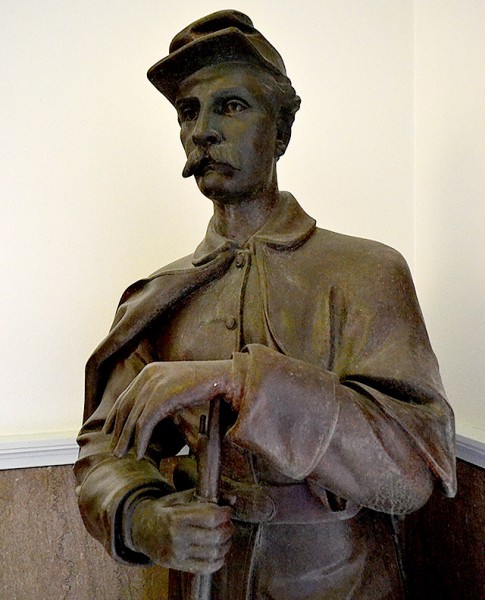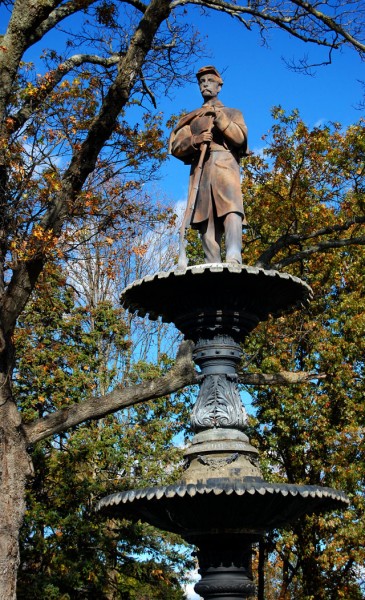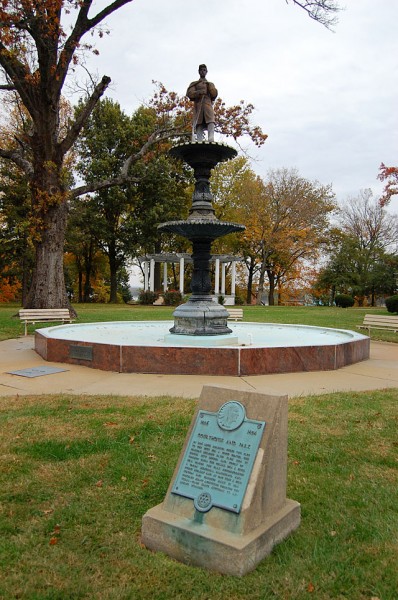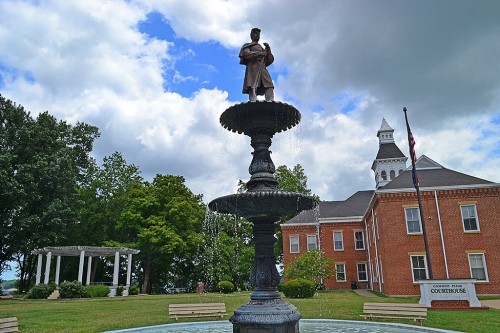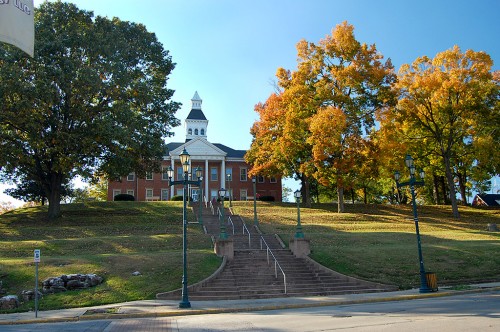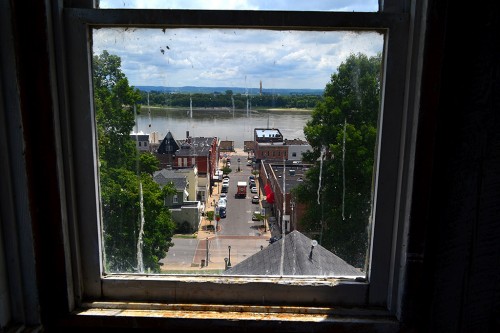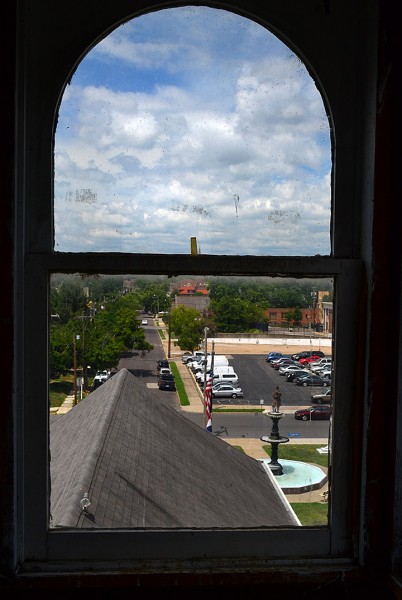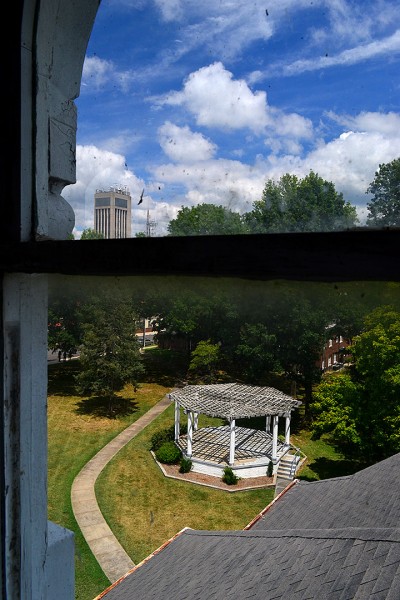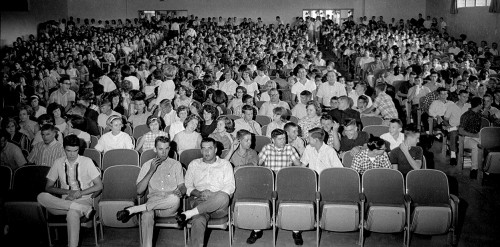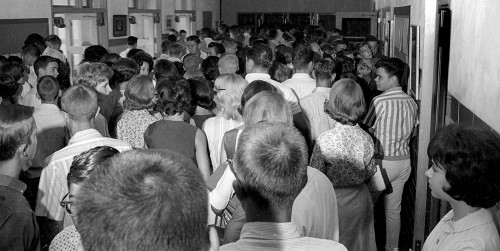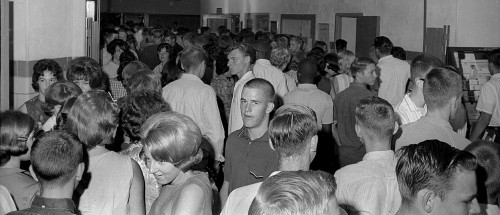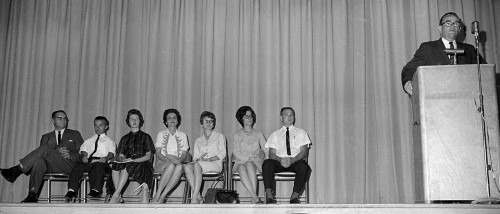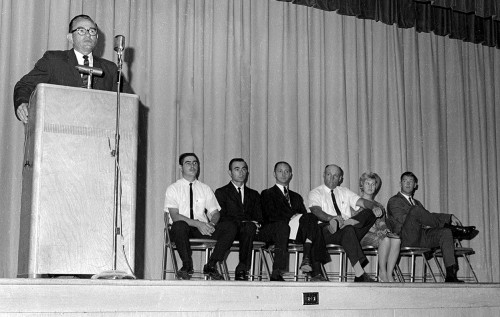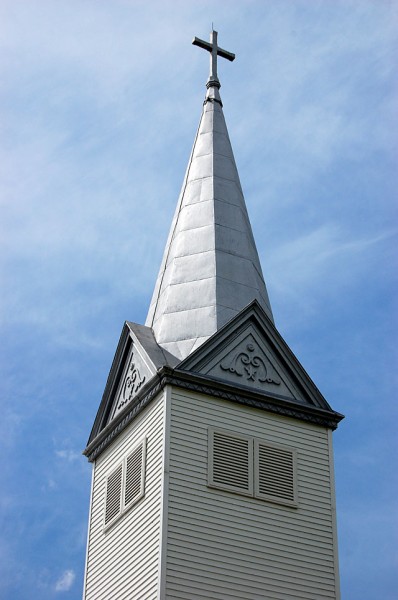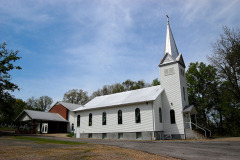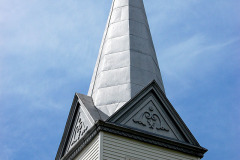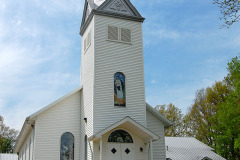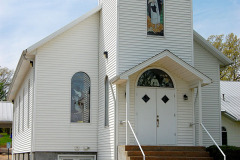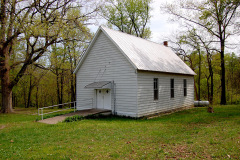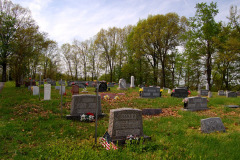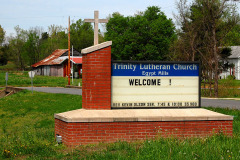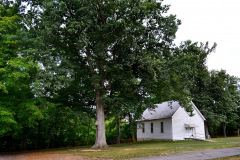When IT director Eric McGowen, Friend Shari and I were on our way up to the Jackson County Courthouse’s bell tower, public works director Don McQuay mentioned something about a figure standing in a dark corner. To be honest, I was more interested in getting up to the dome where the neat stuff was before it got too hot, so I didn’t stop to look at it. (I’ll show you the neat stuff later.)
On the way back down, Don pointed him out again, prompting me to take a closer look. “Know who he is?” Don asked.
Sounded like a trick question to me, so I said, “Not a clue.”
“He’s the Union soldier who used to on the fountain at the Common Pleas Courthouse.” Don said.
A tree limb hit the statue May 12,2003, and broke it into more than 200 pieces. “I picked up most of them in a five-gallon bucket, he said.” At first it looked like the old soldier, erected by the Women’s Relief Corps, and dedicated on Memorial Day 1911, was a goner.
Alan Gibson to the rescue
Alan Gibson, a Dexter sculptor, said he’d try to put the martial Humpty Dumpty back together. Once he did that, he made a mold of the original and recast it with polyester resin and bronze.
Here is a Fred Lynch gallery of photos of the soldier being lifted back up on the fountain.
Shari and I were amazed at the job Gibson did. We couldn’t feel a single joint or seam where the pieces had been put back together.
Tree shadowed statue
When I shot the statue as part of a story on Common Pleas memorials in October 2011, there was a large tree behind the statue. It might have even been the Killer Tree itself (not to be confused with Jackson’s Hanging Tree).
Grounds look naked
When I shot this photo July 13, 2012, the tree was gone, leaving a gap like a missing tooth. You wouldn’t think a missing tree would cause the grounds to feel out of balance, but it did. I guess I just got used to seeing it there even if I never really noticed it until it was gone.

